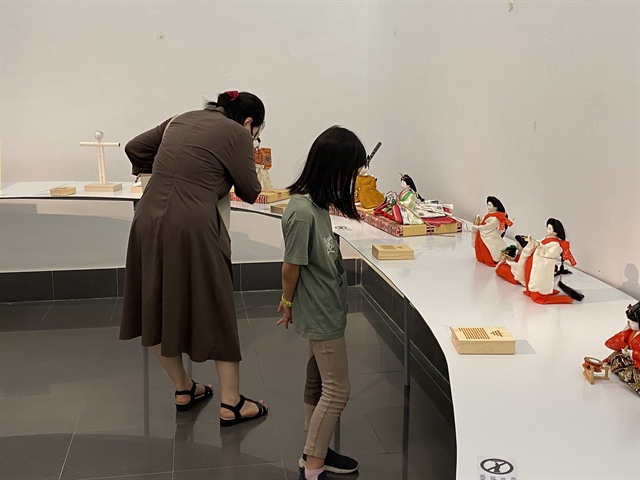
HÀ NỘI — A new exhibition is giving local people a chance to experience the charm of Japanese dolls at the Việt Nam Museum of Fine Arts.
The ‘NINGYO: Art and Beauty of Japanese Dolls’ exhibition displays a total of 67 dolls selected and divided into four parts: Ningyo to pray for children’s growth; Ningyo as fine art; Ningyo as folk art and Spread of Ningyo culture.
Ningyo means “human shape” in Japanese.
“The fact that dolls are an indispensable part of our daily lives is not limited to Japan,” said Doi Katsuma, director of the Japan Foundation Centre for Cultural Exchange in Việt Nam.
“But the diversity of dolls and their delicate craftsmanship, backed by a deep love, could be said to be characteristic of Japanese doll culture.”
The exhibition presents a comprehensive introduction to Japanese doll culture, from Katashiro and Amagatsu, which are archetypal Japanese dolls, to local dolls that reflect Japanese doll culture today, and various figurines that are highly regarded around the world.
Katashiro are paper dolls intended to dispel misfortune that have been passed down since ancient times. They are still used in purification rites at Shinto shrines throughout Japan today.
Amagatsu and Hōkō are dolls designed to protect babies from any misfortune that may befall them.
Ningyo as fine art will show a variety of techniques for making dolls as art objects for display, dating from around the 17th century.
Aside from fine art dolls using expensive materials, many colourful and fun dolls have arisen throughout Japanese culture.
Folk dolls were primarily made from inexpensive materials such as clay, paper, and wood. Many were produced as a side occupation during breaks from farm work, providing entertainment for people in what were often simple lives.
Some of the leading wooden folk dolls are known as Kokeshi. These emerged in the 19th century as gifts for children and were sold in towns with hot springs. Children are said to have played with them by carrying them on their backs.
Doll culture and the well-honed skills and production techniques have also expanded into traditional performing arts and daily life as toys. The materials used for dolls are becoming ever-more diverse.

The Spread of Ningyo culture shows dolls used for traditional puppet theatre and Kabuki plays. It also displays Licca-chan dress-up dolls produced out of soft plastic since 1967, one of Japan’s most loved toy dolls today.
The exhibition is a part of the Travelling Exhibition Programme organised by the foundation to promote international mutual understanding and friendship between Japan and the world.
The exhibition runs until June 26 from Monday to Sunday, 8.30am to 5pm on the 2nd Floor – B museum building, 66 Nguyễn Thái Học Street.
Entry is free. – VNS
- Reduce Hair Loss with PURA D’OR Gold Label Shampoo
- Castor Oil Has Made a “Huge” Difference With Hair and Brow Growth
- Excessive hair loss in men: Signs of illness that cannot be subjective
- Dịch Vụ SEO Website ở Los Angeles, CA: đưa trang web doanh nghiệp bạn lên top Google
- Nails Salon Sierra Madre
 VnExpress News The News Gateway of Vietnam
VnExpress News The News Gateway of Vietnam





